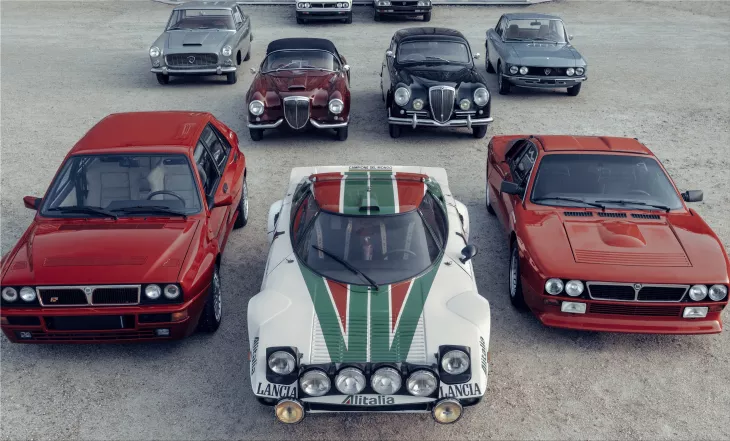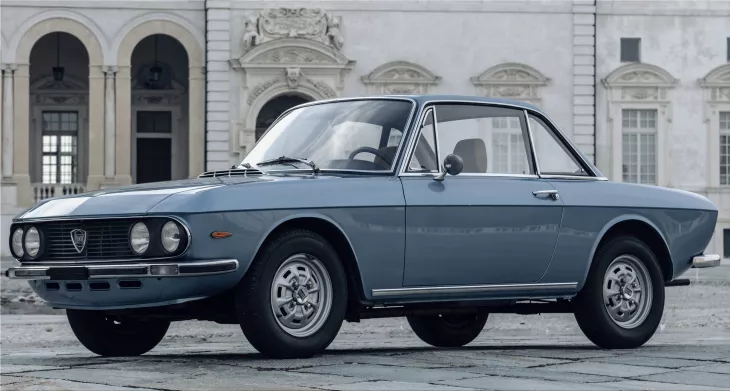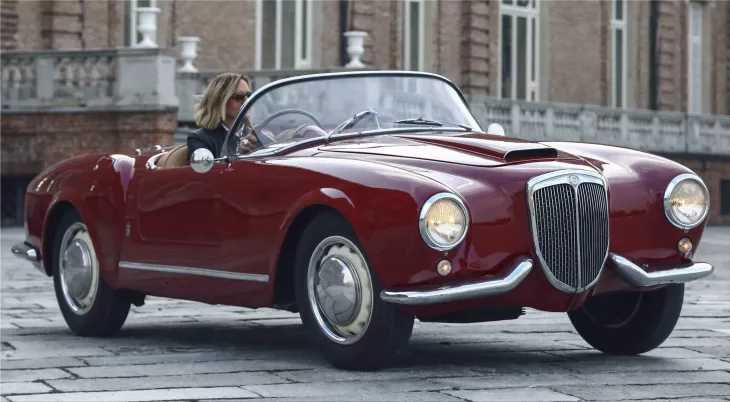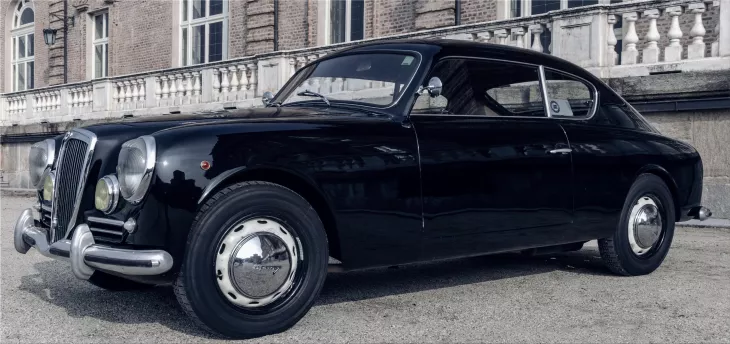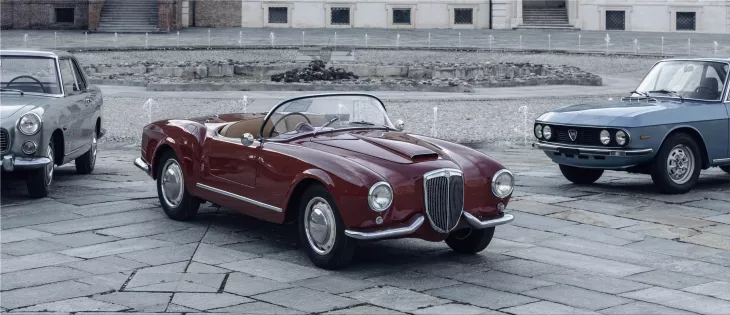The CEO of the Lancia brand, Luca Napolitano, has said that throughout the company's 116 years, "Lancia has always stood out for its gracefulness and elegance, a trait that we find both in its great flagship models, such as the Aurelia and the Flaminia, and the more compact cars, such as the legendary Fulvia. Lancia Aurelia, Flaminia, and Fulvia are, in reality, three icons that have made our brand a symbol of beautiful and well-crafted, so much so that it has conquered the international jet-set, movie stars, and leaders of the state. We were inspired by characteristics such as the "chalice" on the front and the clean, fundamental lines that will be immediately recognizable on our new cars."
With the introduction of the B10 in 1951, the legend of the Lancia Aurelia was born. The B10 was a luxurious sedan with forward-thinking features like the now-iconic book-opening doors. It's a hallmark of Lancia cars and may be found on other legendary makes like the Augusta and Aprilia.
The model, which was made in four different iterations, continues to captivate modern audiences thanks to the timeless appeal of its simple, elegant design. The "chalice," formed when a vertical and horizontal line meets, forms another line to encompass the brand's emblem and is one of the most identifiable design motifs.
From this superb flagship emerges the 1951 Lancia Aurelia coupé B20 Granturismo, the parent of the Italian berlinettas of the 1950s. Boano's design, refined by Pininfarina, ushers in a new era for 2-plus-2 seater Gran Turismo vehicles. At its initial public showing, the audience was particularly taken with its streamlined silhouette, low roof, and streamlined side featuring just two doors and a descending line that emphasized the vehicle's lively personality.
Using the B20's underpinnings, the Pininfarina atelier designed the Lancia Aurelia B24 Spider in 1954. It was a beautiful "moving sculpture" that found great success in the United States thanks to its minimalistic aesthetic, which included handle-free doors, a well-proportioned front end, and a neatly tucked-away rear end. Inside, the steering wheel with three aluminum spokes and walnut crown, the curving dashboard, and the instruments with three circular dials stand out.
A less "extreme" variant of the preceding Spider, the Lancia Aurelia B24 Convertible, made its debut in 1956. A smaller air inlet distinguished it on the bonnet, and more oversized doors with handles, glass, and deflectors.
Sixty years later, she is guided by Vittorio Gassman, who this year would have been 100 years old, as the protagonist of the cult film "Il sorpasso" (1962) by Dino Risi.
The Lancia Flaminia, which debuted at the Geneva Motor Show in 1957 and was manufactured in three series (sedan, convertible, and coupé) between 1957 and 1970, is notable for featuring the first production version of the Lancia logo's new restyling, which was created directly in chromed metal and simplified in shape and thus stands out prominently on the Flaminia's large calendar. The shield and steering wheel have been swapped with minimalist geometric elements for a sleeker, modern logo design. Blue and silver were the two colors chosen. Both the lance that hoists the flag and the flag itself—which features the name Lancia in all capital letters—are identifying features.
Pininfarina's custom-built Lancia Flaminia is a banner model for the company's aesthetic. The Lancia Flaminia is a high-class sedan based on the Aurelia platform, and it is known for its sleek exterior design and plush cabin. The enormous air inlet on the bonnet and the elegant chrome contour that begins at the roof frame and continues throughout the rear fin are two of the most recognizable features. But the artistic peak was attained in 1959 with the two-door Flaminia Coupe, also signed by Pininfarina. Beautiful like no other car of the time, the Flaminia was among the ultimate protagonists of the Italian Dolce Vita, and among its most faithful clients, it counted the actor Marcello Mastroianni who possessed multiple specimens.
Pininfarina, between 1960 and 1961, built four Lancia Flaminia 335s; the 335 designation refers to the car's stretched wheelbase compared to a standard sedan. This presidential limousine in the landaulet version — a distinctive bodywork of representative cars with a hardtop for the front seats and an openable hood for the rear seats — features a unique platform, ministerial blue livery, and delicate upholstery in black Connolly leather, making it a fitting symbol of the creativity and elegance of the Bel Paese.
A streamlined, compact automobile from the Lancia brand, the Lancia Fulvia Coupe debuted in 1965. It differed stylistically from the sedan it replaced by having a more athletic profile, a 2+2 seating arrangement, a more open cabin, more oversized windows, and an angled windscreen and rear window. The Fulvia Coupe, created by Piero Castagnero, then head of the Lancia Style Centre, is based on the sleek profile of Riva motorboats. The iconic "turret" cockpit, with its vast glass surface and thin uprights for superb external visibility, won over the public and critics upon its introduction. With a wood dashboard and steering wheel, and full instrumentation—where the enormous round odometer and rev counter stand out—the interior is athletic and lovely at the same time. These are the same pure and geometric shapes driving the design of its future models.





